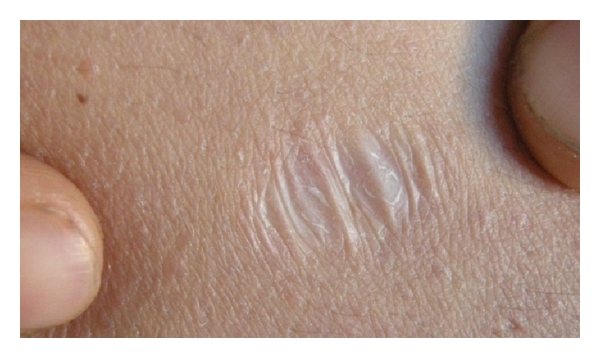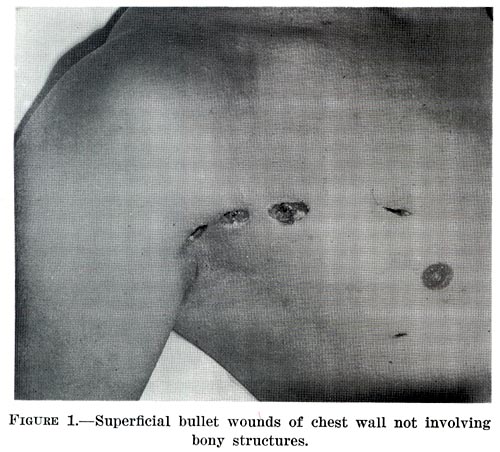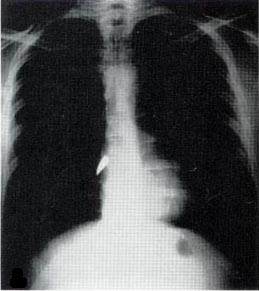|
Wounds
A wound is any disruption of or damage to living tissue, such as skin, mucous membranes, or organs. Wounds can either be the sudden result of direct trauma (mechanical, thermal, chemical), or can develop slowly over time due to underlying disease processes such as diabetes mellitus, venous/arterial insufficiency, or Autoimmune disease, immunologic disease. Wounds can vary greatly in their appearance depending on wound location, injury mechanism, depth of injury, timing of onset (Acute (medicine), acute vs Chronic condition, chronic), and wound sterility, among other factors. Treatment strategies for wounds will vary based on the classification of the wound, therefore it is essential that wounds be thoroughly evaluated by a healthcare professional for proper management. In normal physiology, all wounds will undergo a series of steps collectively known as the wound healing process, which include hemostasis, inflammation, proliferation, and tissue remodeling. Age, tissue oxygenation, ... [...More Info...] [...Related Items...] OR: [Wikipedia] [Google] [Baidu] |
Wound Healing
Wound healing refers to a living organism's replacement of destroyed or damaged tissue by newly produced tissue. In undamaged skin, the epidermis (surface, epithelial layer) and dermis (deeper, connective layer) form a protective barrier against the external environment. When the barrier is broken, a regulated sequence of biochemical events is set into motion to repair the damage. This process is divided into predictable phases: blood clotting (hemostasis), inflammation, tissue growth ( cell proliferation), and tissue remodeling (maturation and cell differentiation). Blood clotting may be considered to be part of the inflammation stage instead of a separate stage. The wound-healing process is not only complex but fragile, and it is susceptible to interruption or failure leading to the formation of non-healing chronic wounds. Factors that contribute to non-healing chronic wounds are diabetes, venous or arterial disease, infection, and metabolic deficiencies of old age.Enoch, ... [...More Info...] [...Related Items...] OR: [Wikipedia] [Google] [Baidu] |
Scar
A scar (or scar tissue) is an area of fibrosis, fibrous tissue that replaces normal skin after an injury. Scars result from the biological process of wound repair in the skin, as well as in other Organ (anatomy), organs, and biological tissue, tissues of the body. Thus, scarring is a natural part of the healing process. With the exception of very minor lesions, every wound (e.g., after accident, disease, or surgery) results in some degree of scarring. An exception to this are animals with complete Regeneration (biology), regeneration, which regrow tissue without scar formation. Scar tissue is composed of the same protein (collagen) as the tissue that it replaces, but the fiber composition of the protein is different; instead of a random basketweave formation of the collagen fibers found in normal tissue, in fibrosis the collagen cross-links and forms a pronounced alignment in a single direction. This collagen scar tissue alignment is usually of inferior functional quality to the ... [...More Info...] [...Related Items...] OR: [Wikipedia] [Google] [Baidu] |
Ballistic Trauma
A gunshot wound (GSW) is a penetrating trauma, penetrating injury caused by a projectile (e.g. a bullet) Shooting, shot from a gun (typically a firearm). Damage may include bleeding, bone fractures, organ (anatomy), organ damage, wound infection, and Plegia, loss of the ability to move part of the body. Damage depends on the part of the body hit, the path the bullet follows through (or into) the body, and the type and speed of the bullet. In severe cases, although not uncommon, the injury is Death, fatal. Long-term complications can include bowel obstruction, failure to thrive, neurogenic bladder and paralysis, recurrent cardiorespiratory distress and pneumothorax, hypoxic brain injury leading to early dementia, amputations, chronic pain and pain with light touch (hyperalgesia), deep venous thrombosis with pulmonary embolus, limb swelling and Debility (medical), debility, and lead poisoning. Factors that determine rates of gun violence vary by country. These factors may include ... [...More Info...] [...Related Items...] OR: [Wikipedia] [Google] [Baidu] |
Emergency Medicine
Emergency medicine is the medical specialty concerned with the care of illnesses or injuries requiring immediate medical attention. Emergency physicians (or "ER doctors") specialize in providing care for unscheduled and undifferentiated patients of all ages. As frontline providers, in coordination with emergency medical services, they are responsible for initiating resuscitation, stabilization, and early interventions during the acute phase of a medical condition. Emergency physicians generally practice in hospital emergency departments, pre-hospital settings via emergency medical services, and intensive care units. Still, they may also work in primary care settings such as urgent care clinics. Sub-specialties of emergency medicine include disaster medicine, medical toxicology, point-of-care ultrasonography, critical care medicine, emergency medical services, hyperbaric medicine, sports medicine, palliative care, or aerospace medicine. Various models for emerg ... [...More Info...] [...Related Items...] OR: [Wikipedia] [Google] [Baidu] |
Skin
Skin is the layer of usually soft, flexible outer tissue covering the body of a vertebrate animal, with three main functions: protection, regulation, and sensation. Other animal coverings, such as the arthropod exoskeleton, have different developmental origin, structure and chemical composition. The adjective cutaneous means "of the skin" (from Latin ''cutis'' 'skin'). In mammals, the skin is an organ of the integumentary system made up of multiple layers of ectodermal tissue and guards the underlying muscles, bones, ligaments, and internal organs. Skin of a different nature exists in amphibians, reptiles, and birds. Skin (including cutaneous and subcutaneous tissues) plays crucial roles in formation, structure, and function of extraskeletal apparatus such as horns of bovids (e.g., cattle) and rhinos, cervids' antlers, giraffids' ossicones, armadillos' osteoderm, and os penis/ os clitoris. All mammals have some hair on their skin, even marine mammals like whales, ... [...More Info...] [...Related Items...] OR: [Wikipedia] [Google] [Baidu] |
Amputation
Amputation is the removal of a Limb (anatomy), limb or other body part by Physical trauma, trauma, medical illness, or surgery. As a surgical measure, it is used to control pain or a disease process in the affected limb, such as cancer, malignancy or gangrene. In some cases, it is carried out on individuals as a Preventive healthcare, preventive surgery for such problems. A special case is that of congenital amputation, a congenital disorder, where fetus, fetal limbs have been cut off by constrictive bands. In some countries, judicial amputation is currently used punishment, to punish people who commit crimes. Amputation has also been used as a tactic in war and acts of terrorism; it may also occur as a war injury. In some cultures and religions, minor amputations or mutilations are considered a ritual accomplishment. When done by a person, the person executing the amputation is an amputator. The oldest evidence of this practice comes from a skeleton found buried in Liang Tebo c ... [...More Info...] [...Related Items...] OR: [Wikipedia] [Google] [Baidu] |
Puncture Wound
Penetrating trauma is an open wound injury that occurs when an object pierces the skin and enters a tissue of the body, creating a deep but relatively narrow entry wound. In contrast, a blunt or ''non-penetrating'' trauma may have some deep damage, but the overlying skin is not necessarily broken and the wound is still closed to the outside environment. The penetrating object may remain in the tissues, come back out the path it entered, or pass through the full thickness of the tissues and exit from another area. A penetrating injury in which an object enters the body or a structure and passes all the way through an exit wound is called a perforating trauma, while the term ''penetrating trauma'' implies that the object does not perforate wholly through. In gunshot wounds, perforating trauma is associated with an entrance wound and an often larger exit wound. Penetrating trauma can be caused by a foreign object or by fragments of a broken bone. Usually occurring in violent ... [...More Info...] [...Related Items...] OR: [Wikipedia] [Google] [Baidu] |
Penetrating Trauma
Penetrating trauma is an open wound injury that occurs when an object pierces the Human skin, skin and enters a tissue (biology), tissue of the body, creating a deep but relatively narrow entry wound. In contrast, a blunt trauma, blunt or ''non-penetrating'' trauma may have some deep damage, but the overlying skin is not necessarily broken and the wound is still closed to the outside environment. The penetrating object may foreign body, remain in the tissues, come back out the path it entered, or pass through the full thickness of the tissues and exit from another area. A penetrating injury in which an object enters the body or a structure and passes all the way through an exit wound is called a perforating trauma, while the term ''penetrating trauma'' implies that the object does not perforate wholly through. In gunshot wounds, perforating trauma is associated with an entrance wound and an often larger exit wound. Penetrating trauma can be caused by a foreign object or by fragm ... [...More Info...] [...Related Items...] OR: [Wikipedia] [Google] [Baidu] |
International Red Cross Wound Classification System
The International Red Cross wound classification system is a system whereby certain features of a wound are scored: the size of the skin wound(s); whether there is a cavity, fracture or vital structure injured; the presence or absence of metallic foreign bodies. A numerical value is given to each feature (E, X, C, F, V, and M). The scores can later be graded according to severity and typed according to the structures injured. This scoring system is intended for quick and easy use in the field. Wounds are scored after surgery or initial assessment. *E = (Entry) centimetres. Estimate the maximum diameter of the entry. *X = (eXit) centimetres. Estimate the maximum diameter of the exit (X = 0 if no exit). *C = (Cavity) Can the "cavity" of the wound take 2 fingers before surgery? No: C=0, Yes: C=1. :This may be obvious before operation or only established after skin incision. For chest and abdominal wounds it refers to the wound of the chest or abdominal wall. *F = (Fracture) No ... [...More Info...] [...Related Items...] OR: [Wikipedia] [Google] [Baidu] |
Splinter
A splinter (also known as a sliver) is a fragment of a larger object, or a foreign body that penetrates or is purposely injected into a body. The foreign body must be lodged inside tissue to be considered a splinter. Splinters may cause initial pain through ripping of flesh and muscle, or infection through bacteria on the foreign object. Splinters are primarily made of wood, but there are many other types, for example, other common types of splinters are, hair, glass, plastic, metal, and spines of animals. As with any wound that breaks the skin, splinters can lead to infection, which if left untreated could develop into more serious complications. If a splinter is in the body for more than 2–3 days, or if the wound shows signs of inflammation or tenderness (whether the splinter was removed or not), advice should be sought from a doctor. Getting a splinter Generally, a splinter causes an initial feeling of pain as the sharp object makes its initial penetration through th ... [...More Info...] [...Related Items...] OR: [Wikipedia] [Google] [Baidu] |
Bullet
A bullet is a kinetic projectile, a component of firearm ammunition that is shot from a gun barrel. They are made of a variety of materials, such as copper, lead, steel, polymer, rubber and even wax; and are made in various shapes and constructions (depending on the intended applications), including specialized functions such as hunting, target shooting, training, and combat. Bullets are often tapered, making them more aerodynamic. Bullet size is expressed by weight and diameter (referred to as "caliber") in both imperial and metric measurement systems. Bullets do not normally contain explosives but strike or damage the intended target by transferring kinetic energy upon impact and penetration. Description The term ''bullet'' is from Early French, originating as the diminutive of the word ''boulle'' (''boullet''), which means "small ball". Bullets are available singly (as in muzzle-loading and cap and ball firearms) but are more often packaged with propellant as a cartri ... [...More Info...] [...Related Items...] OR: [Wikipedia] [Google] [Baidu] |
Degloving
Degloving occurs when skin and the fat below it, the subcutaneous tissue, are torn away from the underlying anatomical structures they are normally attached to. Normally the subcutaneous tissue layer is attached to the fibrous layer that covers muscles known as deep fascia. A degloving injury is a type of soft-tissue avulsion injury that can occur anywhere in the body. Commonly affected areas include the face, scalp, trunk, limbs, and genitalia. Degloving injuries are caused by shearing forces that cause the soft tissue layers to get pulled apart. They were first reported in the twentieth century from machinery such as a wringers used to dry clothes. The invention and widespread use of automobiles also lead to degloving and other traumatic injuries. Degloving injuries can be categorized as either open or closed. Closed injuries are not open to the external world and the underlying structures are not visible. In open injuries, the skin is torn back so that the underlying struc ... [...More Info...] [...Related Items...] OR: [Wikipedia] [Google] [Baidu] |






